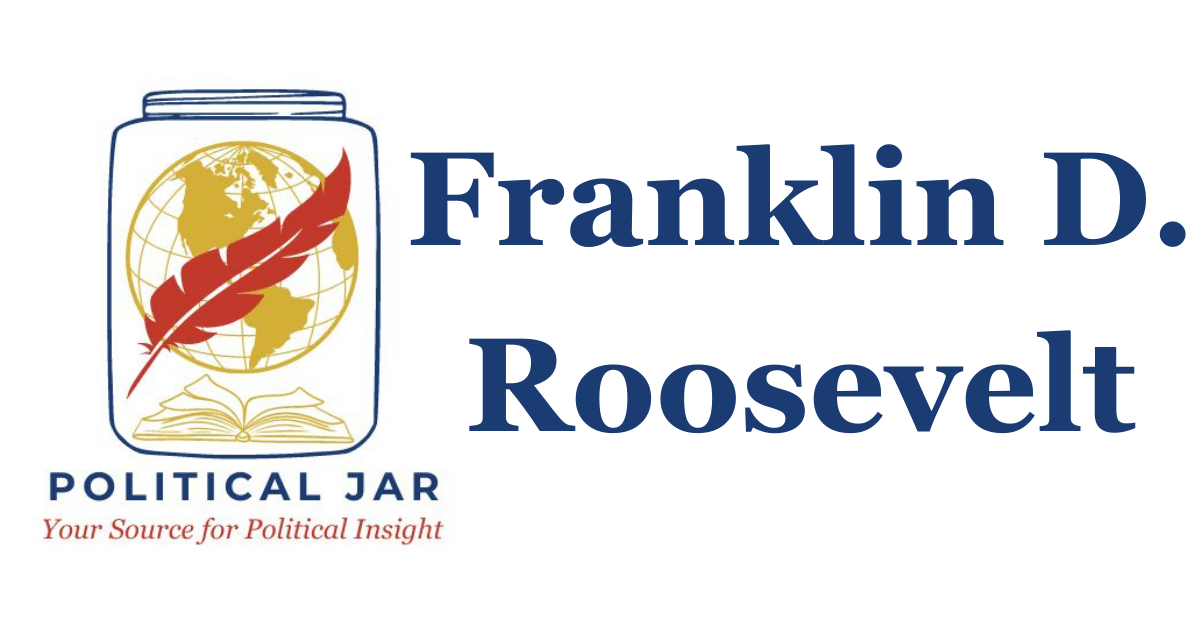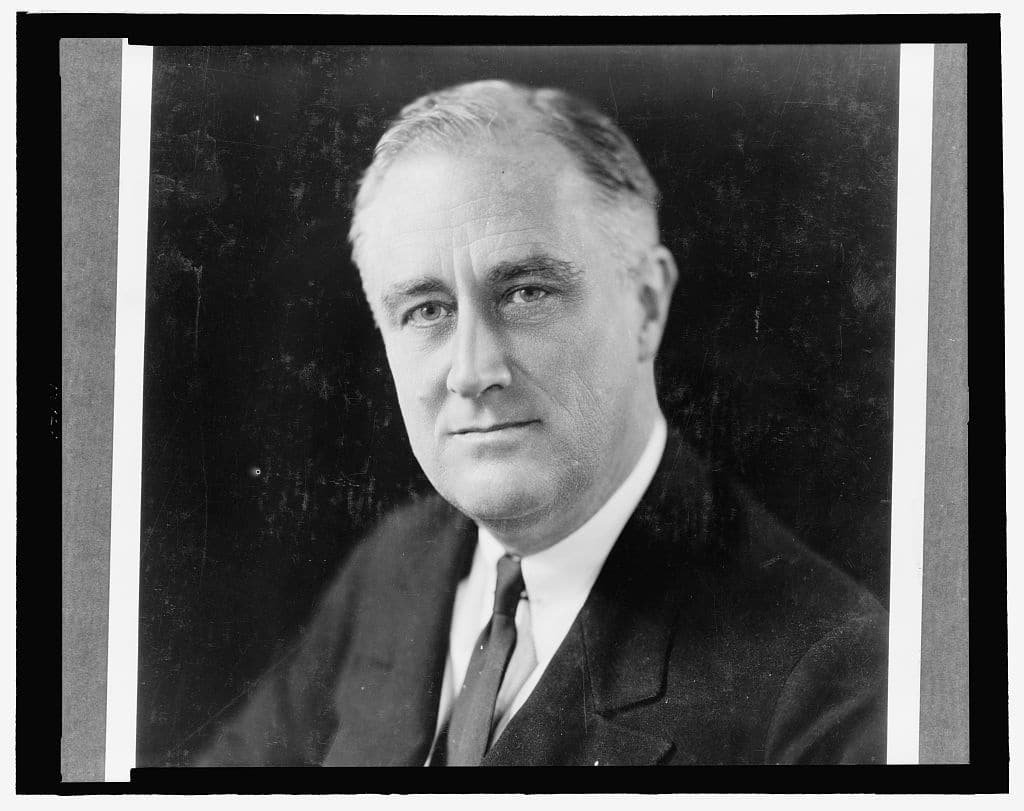




Franklin D. Roosevelt
Franklin D. Roosevelt, the 32nd President of the United States, served from 1933 to 1945, leading the nation through the Great Depression and World War II. Born on January 30, 1882, in Hyde Park, New York, Roosevelt’s presidency marked a transformative period in American history, characterized by significant economic and social reforms, as well as decisive leadership during wartime. This biography explores Roosevelt’s early life, political career, presidency, and legacy, providing a detailed examination of his impact on American and global history.
Early Life and Education
Franklin Delano Roosevelt was born into a wealthy and influential family. His father, James Roosevelt, was a prosperous businessman, and his mother, Sara Delano Roosevelt, was the daughter of a wealthy shipping magnate. The family’s affluence afforded Roosevelt a privileged upbringing, including private tutoring and frequent travels to Europe (Burns, 2001).
Roosevelt attended Groton School, an elite preparatory school in Massachusetts, where he was influenced by the school’s headmaster, Endicott Peabody, who emphasized public service and moral responsibility. After Groton, Roosevelt enrolled at Harvard University in 1900. At Harvard, he was an average student academically but became an editor of the Harvard Crimson and was active in social circles. He graduated in 1903 and went on to study law at Columbia University, though he left without obtaining a degree after passing the bar exam in 1907 (Ward, 1989).
Early Political Career
Roosevelt’s political career began in 1910 when he was elected as a Democrat to the New York State Senate. He gained a reputation as a reformer, opposing the powerful Tammany Hall political machine and advocating for progressive policies. His early political success led to his appointment as Assistant Secretary of the Navy under President Woodrow Wilson in 1913. In this role, Roosevelt demonstrated his administrative capabilities and supported naval expansion and modernization during World War I (Burns, 2001).
In 1920, Roosevelt was nominated as the Democratic candidate for vice president on a ticket with James M. Cox. Although they were defeated by the Republican ticket of Warren G. Harding and Calvin Coolidge, the campaign elevated Roosevelt’s national profile. However, in 1921, Roosevelt was struck by polio, which left him paralyzed from the waist down. Despite this significant personal challenge, Roosevelt remained politically active, working tirelessly on his rehabilitation and public image (Ward, 1989).
Governor of New York
Roosevelt’s resilience and determination led to his election as Governor of New York in 1928. As governor, he implemented a series of progressive reforms to address the economic hardships of the Great Depression, including unemployment relief programs, public works projects, and social welfare initiatives. His successful tenure as governor showcased his leadership abilities and positioned him as a leading candidate for the presidency (Smith, 2007).
The Presidency: The New Deal and Economic Reform
In 1932, Roosevelt won the Democratic nomination for president and defeated incumbent President Herbert Hoover in a landslide victory. Taking office at the height of the Great Depression, Roosevelt faced an unprecedented economic crisis. In response, he launched the New Deal, a series of programs and policies aimed at providing relief, recovery, and reform to the American economy (Freidel, 1990).
The New Deal included initiatives such as the Civilian Conservation Corps (CCC), the Public Works Administration (PWA), and the Social Security Act. These programs aimed to create jobs, stimulate economic activity, and provide a safety net for the most vulnerable Americans. Roosevelt also established regulatory bodies like the Securities and Exchange Commission (SEC) to oversee financial markets and the Federal Deposit Insurance Corporation (FDIC) to protect bank deposits (Smith, 2007).
Roosevelt’s leadership during the Great Depression was characterized by his ability to communicate directly with the American people through his “Fireside Chats,” radio broadcasts that explained his policies and reassured the public. His charismatic and empathetic approach helped to restore confidence and hope in a time of widespread despair (Freidel, 1990).
World War II and International Leadership
As the global political situation deteriorated in the late 1930s, Roosevelt increasingly focused on foreign policy. Despite strong isolationist sentiment in the United States, he recognized the threat posed by the Axis powers. In 1939, he began providing material support to Allied nations through programs like Lend-Lease, which supplied military aid to Britain and other countries fighting against Germany and Japan (Beschloss, 2002).
The attack on Pearl Harbor on December 7, 1941, prompted the United States to enter World War II. Roosevelt’s leadership during the war was marked by his ability to coordinate the military strategy and mobilize the nation’s resources for the war effort. He worked closely with Allied leaders such as Winston Churchill and Joseph Stalin to formulate a unified strategy to defeat the Axis powers (Smith, 2007).
Roosevelt also played a crucial role in the establishment of the United Nations, advocating for a new international organization that would promote peace and prevent future conflicts. His vision of a post-war world order based on collective security and cooperation laid the foundation for the modern international system (Beschloss, 2002).
Personal Life and Character
Roosevelt married Eleanor Roosevelt, his fifth cousin once removed, in 1905. Eleanor became a significant partner in his political career, advocating for social reform and human rights. The couple had six children, one of whom died in infancy. Eleanor’s activism and independence complemented Roosevelt’s political agenda and helped to broaden his appeal among diverse constituencies (Ward, 1989).
Roosevelt’s personal struggles with polio and his determination to overcome his physical limitations defined his character and leadership style. He maintained a public image of strength and vitality, often using braces and wheelchairs discreetly to avoid appearing vulnerable. His resilience and optimism in the face of adversity inspired many Americans and contributed to his enduring legacy (Smith, 2007).
Death and Legacy
Franklin D. Roosevelt was elected to an unprecedented four terms as president, serving from 1933 until his death in 1945. On April 12, 1945, he suffered a cerebral hemorrhage and died at his retreat in Warm Springs, Georgia. His death marked the end of an era, but his impact on American society and global politics endures (Freidel, 1990).
Roosevelt’s legacy is multifaceted. He is widely regarded as one of the greatest American presidents, praised for his leadership during the Great Depression and World War II. His New Deal policies reshaped the role of the federal government in American life, establishing social safety nets and regulatory frameworks that continue to influence public policy. His vision for a post-war world order led to the creation of the United Nations and set the stage for American leadership in international affairs (Beschloss, 2002).
Critics, however, have pointed to some of the shortcomings of his administration, including the internment of Japanese Americans during World War II and the limitations of New Deal programs in addressing racial and gender inequalities. Despite these criticisms, Roosevelt’s transformative impact on American society and his contributions to global peace and security remain central to his legacy (Ward, 1989).
Final Summary
Franklin D. Roosevelt’s life and presidency reflect the complexities and challenges of leadership during times of profound economic and social upheaval. From his early career as a state senator and governor to his transformative presidency, Roosevelt demonstrated a commitment to public service and an ability to inspire and mobilize the American people.
Roosevelt’s New Deal programs and leadership during World War II reshaped the American political and economic landscape, leaving an enduring legacy that continues to influence contemporary public policy and international relations. As a leader who navigated the nation through its most challenging times, Roosevelt’s impact on American history and global affairs is both profound and lasting.
References
Beschloss, M. R. (2002). The Conquerors: Roosevelt, Truman and the Destruction of Hitler’s Germany, 1941-1945. Simon & Schuster.
Burns, J. M. (2001). Roosevelt: The Lion and the Fox (1882-1940). Harcourt Brace Jovanovich.
Freidel, F. (1990). Franklin D. Roosevelt: A Rendezvous with Destiny. Little, Brown and Company.
Smith, J. E. (2007). FDR. Random House.
Ward, G. C., & Burns, K. (1989). The Roosevelts: An Intimate History. Knopf.